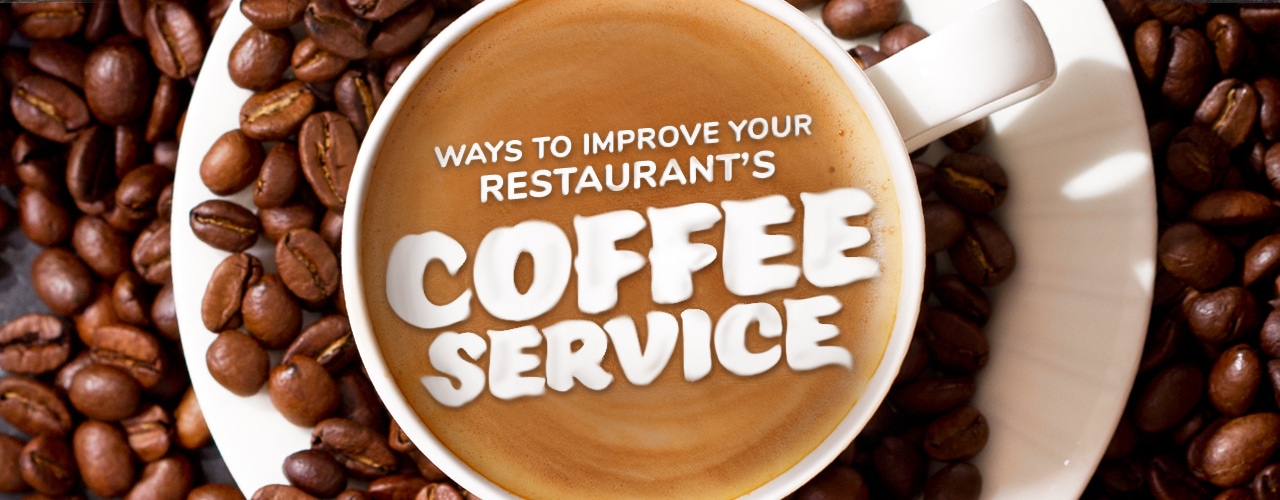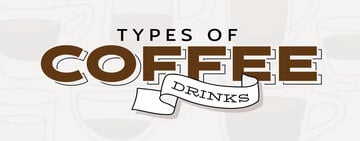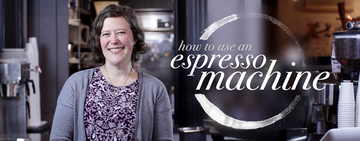Ways to Improve Your Restaurant's Coffee Service
The expectation for good coffee doesn’t stop at cafes. From bars to bistros, customers are demanding the best when it comes to their caffeine fix. By serving fresh, quality coffee, you can increase your customer’s stay while encouraging additional add-on purchases, including pastries or dessert. From beans to brew, there’s room for improvement at every step of your coffee-making process. Once you have chosen the proper coffee equipment for your restaurant, follow these guidelines to produce bold, flavorful coffee that your customers will pay a premium for.
1. Use Whole Bean Coffee
Serving stale coffee is an instant turn-off for customers, and grinding your own whole beans is the easiest way to avoid that. When possible, always choose whole coffee beans for your restaurant or coffee shop.
Whole Bean vs Ground Coffee

Whole bean coffee retains its freshness longer than pre-ground coffee. The majority of your coffee’s flavor is found in the beans’ essential oils. Once ground, these oils evaporate quickly, taking their flavor with them. Unfortunately, beginning with lackluster coffee grounds means your final product will be undesirable from the start.
Instead, invest in a commercial coffee grinder that includes varying grind levels to give you maximum versatility. Grind beans very fine for bold espresso, or keep them coarser for use in a French press. Make sure the beans are ground to the appropriate size to avoid creating an overpowering or underwhelming cup of coffee depending on the style.
2. Choose the Right Grinder
Believe it or not, choosing the right commercial grinder can impact the outcome of your customer’s coffee. When choosing a grinder to produce better coffee, a burr grinder is recommended instead of a blade grinder.
Burr Grinder vs Blade Grinder
A burr grinder has two revolving surfaces that grind coffee between them, while a blade grinder features blades in the center of it similar to a blender. Because they grind beans between surfaces instead of chopping them up with a blade, burr grinders consistently produce same-sized grounds. On the contrary, the grounds produced by a blade grinder are uneven in size, which means your flavor will be inconsistent from cup to cup.
3. Properly Store Your Coffee Grounds
The way you store your coffee grounds after your grind the beans down can impact how long the coffee will stay fresh to produce a satisfying caffeine pick-me-up.
How Do You Store Coffee Grounds?
Store your coffee grounds in an opaque, airtight bag or container in a dark, dry place. It is not recommended you store coffee grounds in a refrigerator or freezer. The thawing and refreezing process that occurs when you remove and place the grounds back in the cold can cause moisture buildup inside the bag that compromises the flavor of your guests’ coffee.
When it comes to storing large amounts of coffee beans, some baristas believe keeping them in the freezer can help preserve freshness. It is only appropriate to store coffee in the freezer or refrigerator when it is still in its whole bean form and tucked away inside an airtight bag. Once the beans have been removed from the cold, they should be ground and used within two weeks. Do not re-freeze or refrigerate already thawed beans.
Coffee Brewing Tips

Once you have fresh grounds to work with, it’s important to consider these factors before and during the brewing process to learn how to make coffee better. These elements are easy to control and can instantly improve the taste of your customer’s cup of coffee.
- Keep your equipment clean. Your carefully crafted grounds can pick up an undesirable taste from dirty, unclean equipment. From the grinder to the brewer, make sure staff members are cleaning out coffee equipment regularly.
- Brew at the right temperature. Brew your coffee grounds in water between 198 and 202 degrees Fahrenheit, with 200 degrees being the optimal temperature. Brewing below 195 degrees results in poor flavor extraction and a flat, unappealing product for your customers. On the other hand, water that’s too hot will result in a bitter flavor.
- Pay attention to your water quality. Since water makes up about 98% of your customer’s cup of coffee, always be sure you’re using a water filtration system with your brewer. Water that’s slightly hard, preferably 50 to 100 ppm of dissolved minerals, will deliver the best-tasting coffee. If it’s too hard, however, lime scale buildup can occur in your equipment, and less flavor will be extracted from your coffee grounds. Too soft or distilled water may prolong the brewing process and result in a poor or bitter taste.
- Experiment with the bean to water ratio. The industry standard for the perfect cup of coffee is 1 part coffee to 18 parts water. Use a scale to weigh beans as opposed to measuring by volume. This will help create a more definitive and exact ratio, which leads to more consistent cups of coffee every time.
- Adjust your brewing time. The time in which your coffee needs to brew is largely dependent on how fine you have ground the beans. The finer the grind, the shorter the amount of time is needed to brew. When you have a coarser grind, more time is needed for water to make contact and extract flavor from the bean particles.
Ways to Upgrade Your Coffee Service

If your basic cup of Joe isn’t cutting it anymore, here are a few ways to spruce up coffee service.
- Ensure staff is properly trained. It’s so simple that it can often be overlooked. Take time to train your staff on how to make a cup or pot of coffee. This creates consistency from shift to shift, which your customers will appreciate.
- Embrace change and trends in the industry. Coffee will always be classic, but the ways in which we use it changes year-to-year. Get on board and capitalize on the year’s hottest (or coldest) coffee trend.
- Get creative with alternative uses for coffee. Coffee doesn’t just belong in a mug anymore. Incorporate it into cocktails, or create a cold brew and imperial stout mashup. Additionally, you can use it to enhance the flavor of your house-made desserts or signature soups.
When done right, coffee is an enticing and aromatic treat that customers are happy to spend money on day after day. Its versatile nature means the perfect cup of coffee can be served at breakfast, lunch, dinner, or even dessert to customers who will appreciate its bold, rich flavor. Follow the above guidelines to ensure that you're getting the most out of your equipment and serving delicious and profitable coffee to customers.



